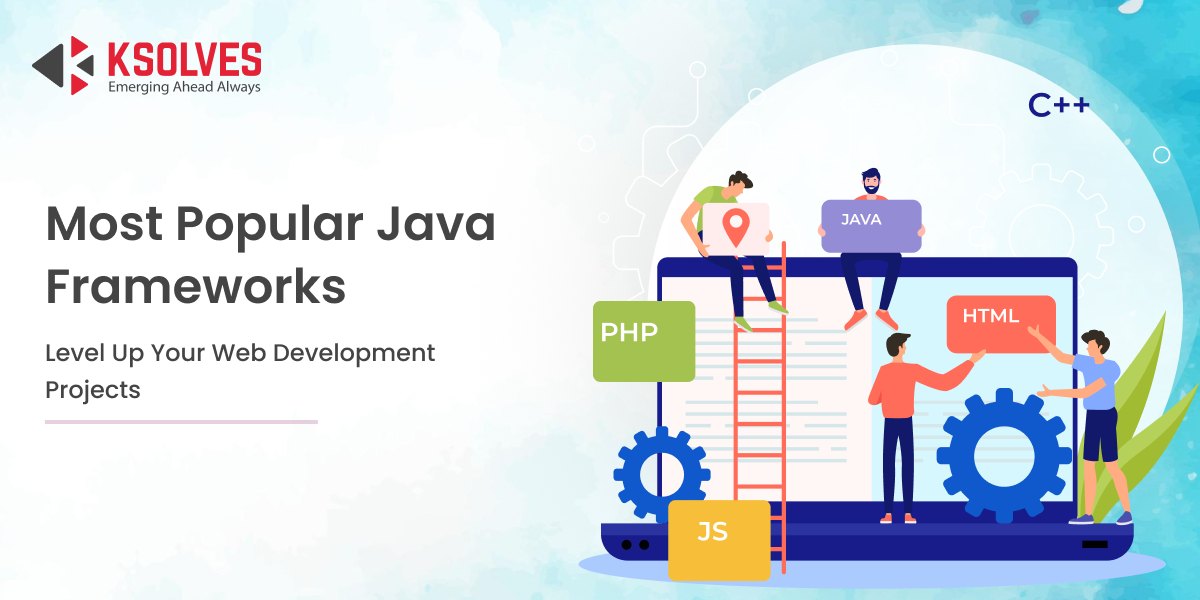Java in Cloud-Native Applications: Benefits and Challenges
Java
5 MIN READ
November 20, 2025
![]()

Cloud-native development has transformed how software is built and deployed, moving away from rigid monolithic structures to flexible, modular, and containerized systems that thrive in the cloud. But amidst this transformation, enterprises continue to rely on one language that has stood the test of time: Java.
Known for its reliability and portability, Java has evolved to meet the demands of modern cloud-native architectures. Today, it powers scalable microservices, resilient enterprise applications, and serverless functions, bridging the gap between legacy systems and cutting-edge cloud solutions.
In this blog, we’ll explore why enterprises use Java for cloud-native development, its undeniable benefits, the challenges developers face, and strategies to unlock its full potential in cloud environments.
Top 5 Benefits of Using Java in Cloud-Native Applications
Java brings a unique combination of robust performance, a mature ecosystem, and cross-platform flexibility to cloud-native development. Leveraging Java in cloud environments allows businesses to build scalable, secure, and resilient applications that can adapt to dynamic workloads while maintaining reliability and ease of maintenance.
1. Scalability and Performance
Java is inherently strong in multithreading and concurrency, enabling applications to handle multiple tasks simultaneously. When combined with cloud infrastructure, Java applications can auto-scale to meet changing demand. They can leverage cloud services such as AWS Auto Scaling, Google Cloud Compute Engine, or Kubernetes orchestration to handle increased workloads efficiently.
Performance optimization tools like JVM tuning and profiling ensure that applications remain efficient even under heavy workloads.
2. Robust Ecosystem and Tooling
One of Java’s biggest strengths is its mature ecosystem. Frameworks such as Spring Boot, Spring Cloud, Quarkus, and Micronaut simplify microservices development and provide built-in support for cloud-native patterns.
These frameworks integrate seamlessly with CI/CD pipelines, containerization tools like Docker, and orchestration platforms like Kubernetes, streamlining cloud deployment and operational management.
3. Security and Compliance
Java offers a secure runtime environment, with built-in features such as strong typing, exception handling, and access control. Many frameworks provide security modules for authentication, authorization, and data encryption, ensuring that applications meet regulatory requirements.
Additionally, Java’s widespread use in enterprises means a wealth of industry-standard security best practices is available for cloud-native deployments.
4. Portability and Vendor Independence
Java’s “write once, run anywhere” philosophy aligns perfectly with cloud-native principles. Containerized Java applications can run across multiple cloud providers without significant modification, helping organizations avoid vendor lock-in.
Open standards like Docker and Kubernetes further enhance portability, making Java applications adaptable in diverse cloud ecosystems.
5. Seamless Cloud Integration
Java provides native support for cloud services and APIs, making it easier to connect applications with databases, messaging systems, and storage solutions in cloud environments.
This ensures that Java-based cloud-native applications can efficiently leverage cloud features like auto-scaling, serverless functions, and distributed caching, delivering smoother, more responsive experiences.
5 Key Challenges of Using Java in Cloud-Native Applications
While Java offers powerful tools for cloud-native development, it also comes with unique challenges. Let’s walk through a few challenges.
1. Resource Consumption
Java applications often require more memory and CPU than lightweight languages like Go or Node.js. In cloud environments, this can translate to higher costs and resource overhead. Developers need to adopt resource optimization strategies, such as minimizing JVM heap size, using native image compilation, or fine-tuning garbage collection.
2. Cold Start Latency
In serverless architectures, Java can experience longer cold start times due to JVM initialization. This delay affects applications requiring rapid response times. Techniques like Ahead-of-Time (AOT) compilation with GraalVM, reducing dependencies, and using lightweight frameworks like Quarkus or Micronaut can significantly improve startup performance.
3. Complexity in Microservices Architectures
While microservices offer modularity, they introduce challenges such as managing inter-service communication, data consistency, and orchestration. Java frameworks address these issues with patterns like circuit breakers, service discovery, and distributed configuration, but developers must carefully design architectures to avoid bottlenecks and maintain scalability.
4. Observability and Monitoring
Cloud-native applications are inherently distributed, making observability critical. Java applications require centralized logging, metrics, and tracing to monitor performance, detect errors, and ensure reliability. Tools like Prometheus, Grafana, ELK Stack, and OpenTelemetry provide essential visibility, but require careful integration.
5. Dependency Management and Version Compatibility
Java’s rich ecosystem comes with numerous libraries and frameworks, which can lead to complex dependency management in cloud-native projects. Conflicting library versions or outdated dependencies can cause runtime issues, increase build complexity, and slow down deployment. Effective dependency tracking, version control, and automated testing are essential to maintain stability and ensure smooth cloud-native operations.
Best Practices for Java in Cloud-Native Development
Adopting cloud-native principles with Java requires careful planning and best practices. The following practices help developers deliver scalable, efficient, and reliable Java applications in dynamic cloud environments.
1. Optimizing Resource Usage
Efficient memory and CPU management is critical for Java applications in cloud-native environments. Developers should monitor heap usage, optimize object allocation, and fine-tune garbage collection for optimal performance.
Using lightweight containers and minimizing unnecessary libraries or dependencies can reduce memory footprint and improve startup times, which is especially important for microservices and serverless deployments.
2. Enhancing Startup Performance
Slow startup times can impact serverless and containerized Java applications. Frameworks like Quarkus and Micronaut support Ahead-of-Time (AOT) compilation with GraalVM, producing native images that drastically reduce startup latency and memory consumption.
Additional strategies include lazy-loading components, reducing initialization logic, and avoiding heavy runtime dependencies to ensure faster boot times and responsiveness.
3. Implementing Robust Microservices
Cloud-native applications often follow a microservices architecture, which introduces complexity in service communication and reliability. Developers should adopt design patterns such as API Gateway, Circuit Breaker, Retry Policies, and Event-Driven Architecture.
Services should be designed for fault tolerance, load balancing, idempotency, and resilience, ensuring that inter-service communication remains reliable under high traffic or partial failures.
4. Strengthening Observability
Distributed cloud-native Java applications require comprehensive observability to detect issues and optimize performance. Implementing centralized logging, metrics, and tracing is essential.
Tools like Prometheus for monitoring metrics, Grafana for dashboards, ELK Stack for centralized logging, and OpenTelemetry for distributed tracing provide deep visibility into application health, helping teams troubleshoot and maintain reliability efficiently.
Java Frameworks and Tools for Cloud-Native Applications
- Spring Boot: Simplifies Java microservices development with embedded servers and auto-configuration.
- Spring Cloud: Adds cloud-native capabilities like service discovery, configuration management, and load balancing.
- Quarkus: Optimized for containerized/serverless apps with fast startup and low memory footprint.
- Micronaut: Lightweight framework with compile-time dependency injection and fast startup for microservices.
- GraalVM: Enables native image compilation, reducing startup time and memory usage.
- Helidon: Lightweight microservices framework compatible with Java SE, ideal for Kubernetes.
- Jakarta EE / Eclipse MicroProfile: Standards-based frameworks for enterprise cloud-native applications with fault tolerance and metrics.
- Docker: Containerizes applications for portability across cloud and on-prem environments.
- Kubernetes: Orchestrates, scales, and manages containerized microservices efficiently.
- Prometheus: Collects and monitors metrics for the performance and health of applications.
- Grafana: Visualizes metrics and dashboards for real-time monitoring and analysis.
- OpenTelemetry: Provides distributed tracing and observability for complex microservices architectures.
- Maven / Gradle: Build and dependency management tools for Java projects.
Conclusion
Java continues to be a powerful and versatile choice for cloud-native applications, offering scalability, reliability, and a mature ecosystem of frameworks and tools. While challenges exist, following best practices ensures that businesses can build efficient, resilient, and future-ready cloud-native solutions. By understanding both the benefits and challenges, organizations can fully leverage Java’s strengths in modern cloud environments.
As a leading Java development company in India, the USA, and the UAE, we help businesses navigate these complexities and unlock the full potential of Java in cloud-native development. From designing scalable microservices architectures to optimizing performance, our team delivers tailored, high-quality cloud solutions.
Still unsure about Java for your cloud-native project? Our experts can guide you.
![]()







AUTHOR
Java
Share with